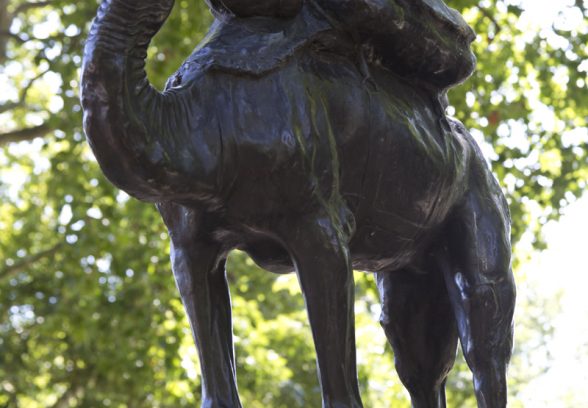This website uses cookies
This website uses cookies to enable it to function properly and to analyse how the website is used. Please click 'Close' to accept and continue using the website.



London: Imperial Camel Corps
Status: Listed Grade II
Architect: Cecil Brown & A.B.Burton (Founder) 1920
Location: Embankment Gardens, London
The Imperial Camel Corps were formed to patrol the western desert in the First World War and fought major campaigns in Egypt, Sinai and Palestine. Their job was to protect Allied troops (evacuated after the failure at Gallipoli) from risings by the Ottomans and Senussi confederation of tribes. The Senussi were eventually forced into submission late in 1916 by starvation, and by being denied the use of wells by camel corps units and light car patrols. The Camel Corps’ most famous moment was assisting Lawrence of Arabia to capture Jerusalem in the rebellion of 1916-18, although the damper weather meant many animals became victims of sarcoptic mange. The majority of the Infantry were Australian, some of whom were already experienced camel jockeys. The corps were so successful that they were expanded from four to eighteen companies. Six companies were formed from British Cavalry, two from New Zealand Cavalry. The corps were reorganised into four large battalions to fight the Turks, assisted by an artillery unit from Hong Kong and Singapore. By the end of the war 346 of their formation had died in action.
There was also an Indian Bikaner Camel Corps, and a Camel Transport Corps.
We’ve been unable to find much information so far on the artist, Major Cecil Brown (1868-1926) but it is thought that he was a corps officer. Auction records show that he specialised in racehorse sculptures and paintings.
Jon Wright
Either enter the name of a place or memorial or choose from the drop down list. The list groups memorials in London and then by country

Become a C20 member today and help save our modern design heritage.